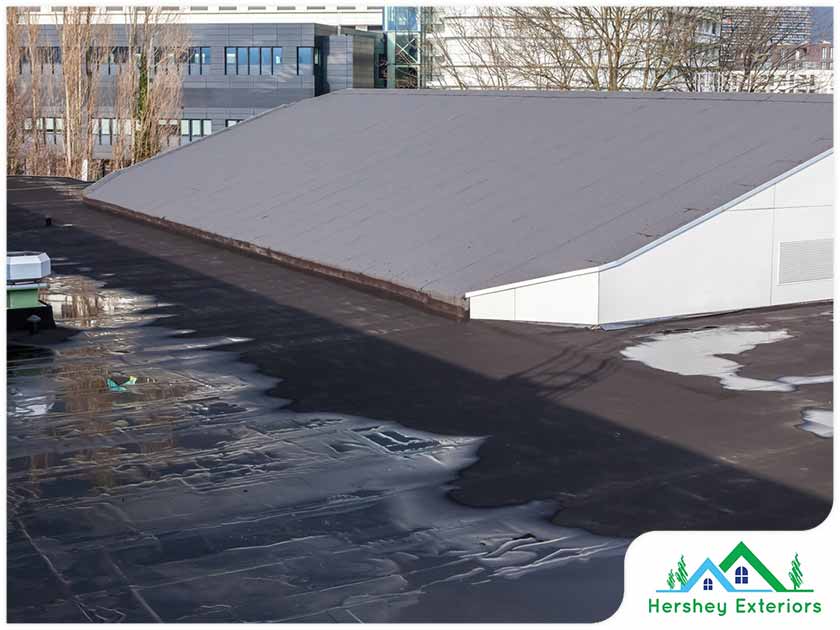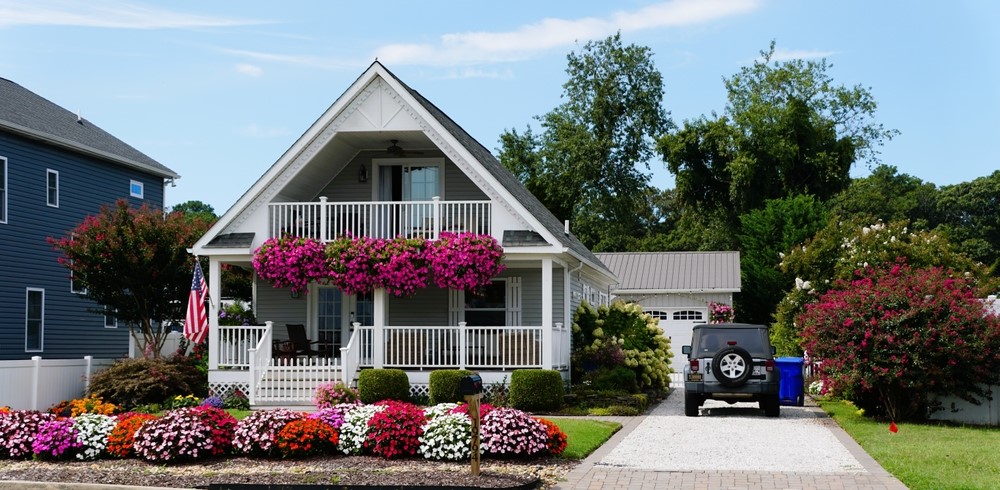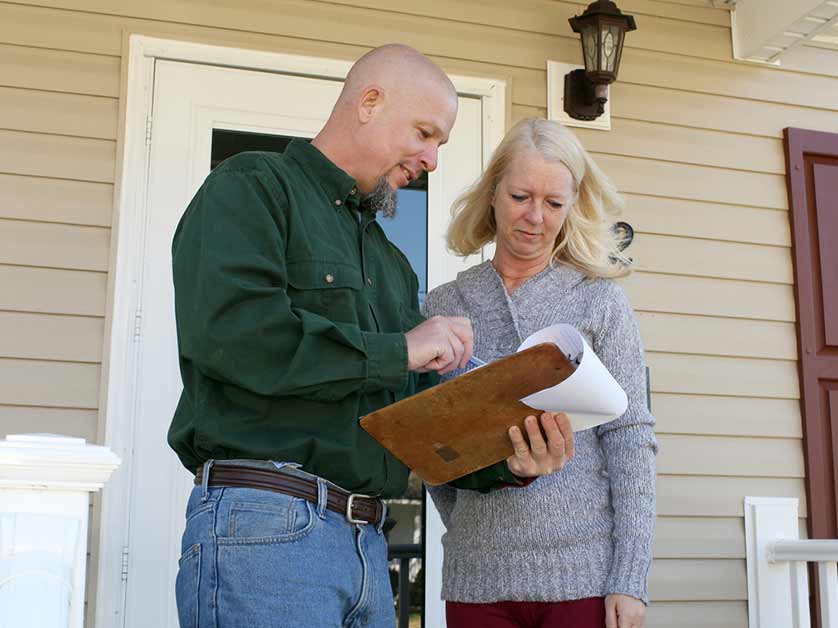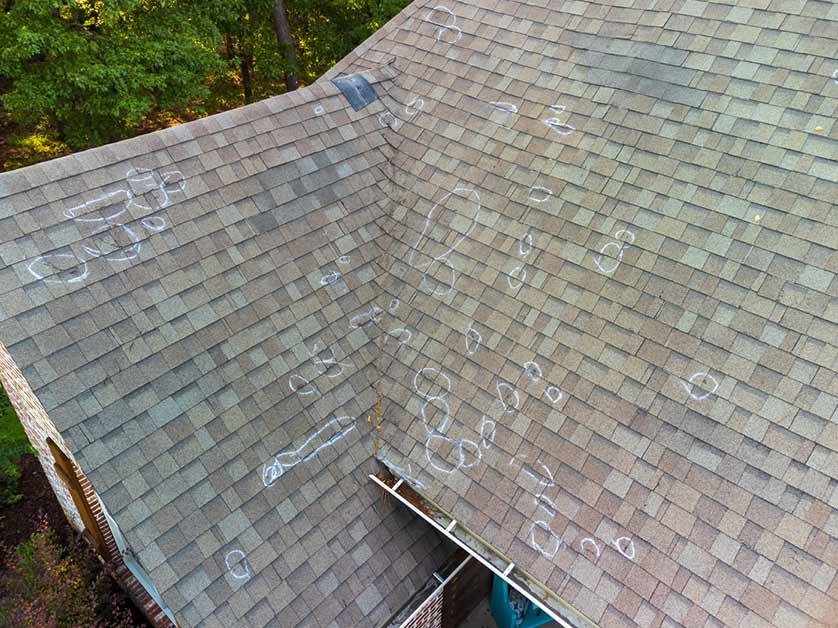Your roof protects your home from the elements, and keeping moisture out is one of its primary functions. However, excess heat and humidity cause several issues that can lead to severe roof damage over time. Moreover, your roof's ability to repel moisture will wane as it ages and deteriorates.

Today, we explain how moisture can cause roof damage.
How Does Moisture Damage a Roof?
- Structural Damage
Moisture from various activities inside your home goes up to the attic. For example, cooking or baking causes moisture to turn into vapor. Water used for indoor plants will also become water vapor and accumulate in the attic over time. The moisture in your attic must be vented so that it won't cause water damage to any wooden components. A humid attic with poor ventilation will eventually suffer from excess moisture, which promotes mold growth on the rafters, sheathing and other wood materials. The presence of mold in these parts will weaken your roof's support structure, and the excess moisture can also result in wood rot.
A humid attic with poor ventilation traps excess heat, which can rise to your roof and increase the surface temperature of your asphalt shingles, especially during summer. The high heat level will degrade the roof material, affecting its durability and shortening its lifespan.
- Outdoor Humidity
Humid temperatures during spring and summer will carry moisture-heavy air. Over time, asphalt shingles in their presence will suffer from water damage. Scheduling roofing inspection and maintenance calls let your storm damage repair contractors detect moisture-related issues early, allowing you to fix them before they spiral out of control.
How to Tell if Your Roof Has Sustained Moisture Damage
The presence of moisture in the attic affects several parts of your home. Here are some signs you have a roof with moisture damage:
- Damp and Sagging Drywalls
Ceiling and wall drywalls will absorb moisture from the attic. As granular materials, drywalls absorb water between their particles, causing the material to deteriorate more quickly. If you notice your ceiling is sagging or feel that your drywalls are damp and soggy, have a storm damage repair contractor check your attic for signs of moisture and rot.
- Wood Rot
Homes made from wood or cellulose materials are susceptible to rotting wood walls, doors and other components. Over time, a humid attic with poor ventilation will increase the presence of moisture inside your home. A humidity level above 20% will create condensation on interior wooden components, causing them to rot if left undetected for a long time.
- Corrosion
Condensation will corrode the roof's metal components. High humidity inside the attic will cause metal fasteners and connectors to be vulnerable to rust.
Other Effects of Roof Moisture Damage
We've learned that moisture damage will cause your roof and other parts of your home to deteriorate faster. Apart from such types of damage, it can also affect your comfort and safety in the following ways:
- Health Hazard
High humidity levels in the attic - and eventually in your interior - will encourage mold growth and rot. Aside from accelerating wood rot, mold colonies can mature and release dangerous microscopic spores into your indoor air. The spores will degrade your indoor air quality and cause health symptoms. People with strong immune systems may handle environments with elevated mold spore levels well. Unfortunately, vulnerable individuals with allergies, asthma, poor immune systems or respiratory issues could suffer with health problems.
- Poor Indoor Comfort
High relative indoor humidity will make your home feel clammy and hot. Hot and moisture-filled air from the attic will increase your indoor moisture levels, causing your HVAC to work harder to cool your indoor spaces and remove condensation from the air.
- Increased Presence of Bugs
Dust mite populations thrive in moisture-filled roofs and homes. If humidity rises above 60%, mites can start growing alongside molds. Your air conditioning and air filters will work harder and consume more electricity to remove them and keep your humidity levels low.
- Danger to Electronics
High levels of interior condensation due to attic humidity can also corrode wires and outlets. Moisture can lower wire insulation resistance, infiltrate the contacts inside and short-circuit them. Furthermore, due to high humidity indoors, electric appliances may develop rust in their components, wires and controls.
How to Prevent Damage From Excessive Humidity
Humidity in your attic and interiors can be controlled. Avoid the issues we've mentioned earlier by performing the following measures:
- Roof Ventilation
Residential and commercial roofing must be dry to prevent mold growth and ensure the wood rafters and sheathing won't rot. Good attic ventilation is the best way to do this. Ask your roofers to evaluate your roof system's ventilation. They might include powered intake and exhaust fans if your area has insufficient wind activity or the roof's geometry causes insufficient ventilation.
- Consistent Maintenance
Moisture can infiltrate your attic and interior walls without any immediate signs. An experienced roofer can identify and resolve this early with a regular maintenance schedule. The team can perform minor repairs and improvements that ensure moisture does not infiltrate further and cause wood rot.
- Dehumidification
Sometimes, roof vents aren't enough to promote proper airflow, especially in colder regions. In this case, your roofer might recommend using dehumidifiers in your attic to reduce moisture levels and keep the space dry.
- Gutter Cleaning
Gutters protect your siding, basement and interiors from water runoff. Clogged gutters and downspouts will cause backflow that can cause water damage to your fascia, roof and other building components. During maintenance, your roofer may also clean your gutters and downspouts.
- Leaves and Debris Removal
Twigs and leaves from trees can clog gutters when they are left to accumulate. Furthermore, leaves on your roof will absorb water and cause moisture to infiltrate your asphalt shingles. Long tree branches can also serve as pathways for small animals to access your roof, attic or gutters where they can potentially make a home for themselves. Make sure to cut any overhanging or nearby tree branches to avoid such issues. Hire an expert to remove them if they're too thick.
Hershey Exteriors, Inc has provided decades of professional siding and roofing solutions to the local community. We ensure high-quality, warranty-covered roofing products and installations, so you can have peace of mind when you work with our team. To schedule a consultation with our experts, call (302) 569-9039, or fill out this contact form.
Tags
Subscribe to Hershey Exteriors's Blog








Comments